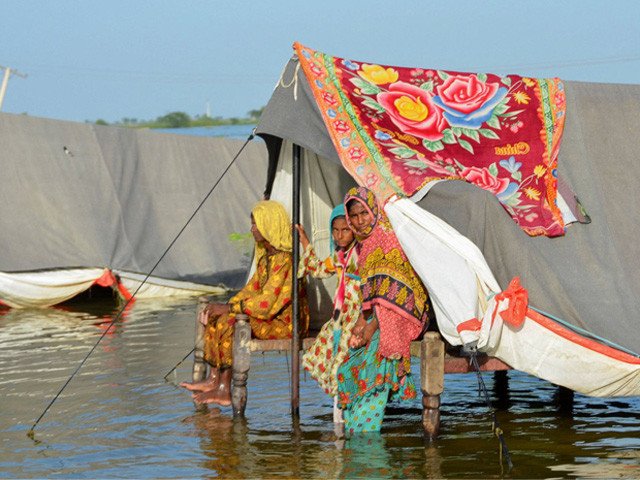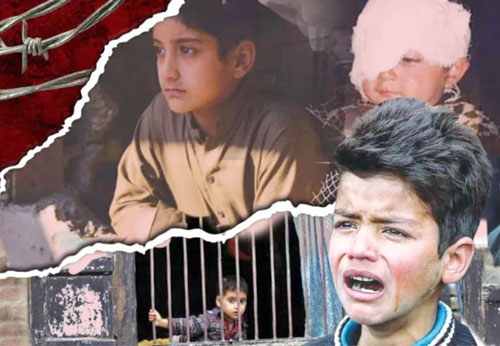
LONDON: The UN Office for the Coordination of Humanitarian Affairs (OCHA) has said that 83 per cent of the response plan for last year’s devastating floods has been funded as $583 million has been mobilised against a requirement of $816m.
The year 2022 marked a significant transformation in Pakistan’s humanitarian operations, with a notable shift to improved sector-specific coordination and response mechanisms, it noted.
Despite substantial progress, diverse challenges and variations across the provinces emphasise the continued necessity for efficient, inclusive, and purposeful coordination within the humanitarian sector, said the final report ‘Flood Response Plan’ released by the OCHA on Monday.
The UN-led country team is discussing the 2024-2025 agenda, focusing on linking it with development initiatives and enhancing capacity building.
OCHA says 1.3m flood-hit people still displaced; Pakistan remains a climate hotspot
In the 34 prioritised districts, humanitarian partners assisted 7.9m people (83pc of the 9.5m target) in the Floods Response Plan, leng a gap of 1.6m. About 10.5m people still require aid, facing challenges such as limited access to clean water and health services, heightened food insecurity, and malnutrition.
Displaced and vulnerable
While two-thirds of those displaced have returned home a year later, 1.3m people remain temporarily displaced in Sindh, Balochistan, and Khyber Pakhtunkhwa, with 900,000 concentrated in the five hardest-hit districts of Sindh, posing protection risks due to pre-existing vulnerabilities.
About 10.5m out of 36.7m people living in rural areas were classified as highly food insecure, categorised in Integrated Phase Classification from April-October 2023 across 43 analysed districts of Sindh, Balochistan and KP.
Around 5m under-five children across the country remain in need of critical nutrition services out of which around 1.5m live in flood-affected areas. Over 2.1m children, assessed by the recent IPC acute malnutrition analysis, living in the 32 flooded districts are affected by acute malnutrition and are in urgent need of treatment.
Approximately 8m people, half of them children, lack access to safe water in flood-hit regions, with over 500,000 households lacking sanitation. This contributes to outbreaks of preventable diseases.
Road to recovery
Pakistan remains a climate hotspot, heightening vulnerability. Urgent investment is needed for long-term recovery efforts, focusing on constructing the climate-resilient ‘water, sanitation, and hygiene systems’ to address equity gaps and reduce vulnerability to future climate shocks.
Large-scale housing reconstructing plans are being deployed with support from the government, but concerns over remaining transitional shelter needs and related vulnerabilities remain high. Further 50pc of the households require winter assistance, most of whom are in flood-affected areas prone to harsh winters.
The government designated 84 districts as ‘calamity-hit’, with the most significant impact felt in the southern and central regions. The economic impact was most prominent in Sindh, which suffered 70pc of the country’s total losses and damages.
Assistance in the prioritised districts and overall need for 9.2m out of 14.6m people was provided in the food security and agriculture sector. Originally targeting 4m people, generous donations enabled support to a significantly higher number.
Food aid reached 5.3m, with half receiving a single distribution. Livelihood support extended to 3.9m, including agriculture inputs for 1.2m for winter and summer crops. Livestock health aid benefited 486,000, while cash assistance reached 1.2m people. Cash-for-work initiatives helped over a million, with 143,000 benefiting from irrigation channel rehabilitation.
Approximately 5,000 individuals received support through animal shelter restoration, and 2.7m mothers received counselling on optimal infant and young child feeding.
According to the report, over a million children were provided with multi-micronutrient powders to combat deficiencies.
The nutrition sector is grappling with a substantial caseload of malnourished children, with approximately 5m children nationwide requiring critical nutrition services. Of this, around 1.5m live in areas affected by floods. AFP
Please visit our website London Institute of Peace Research for latest peace news


